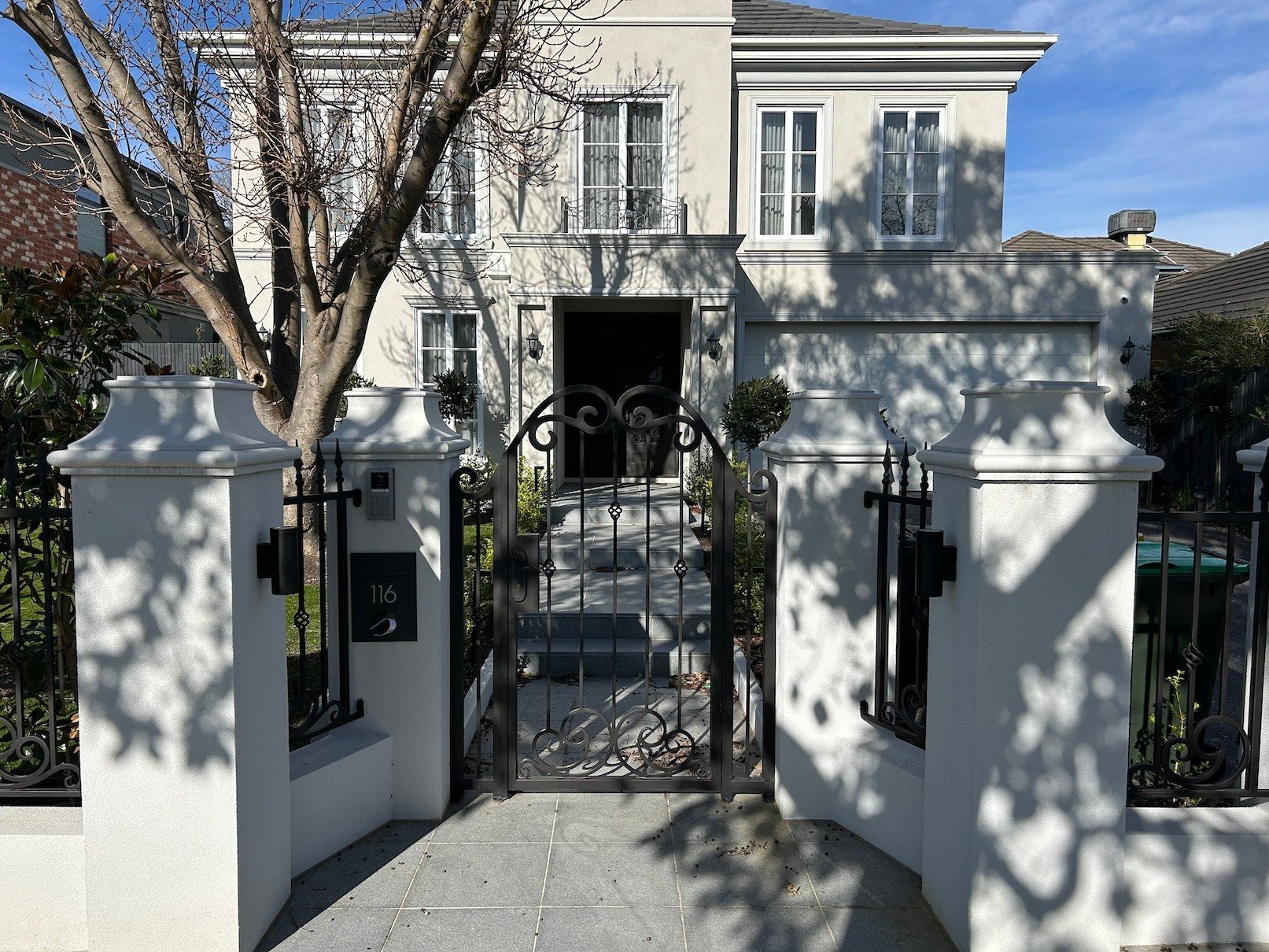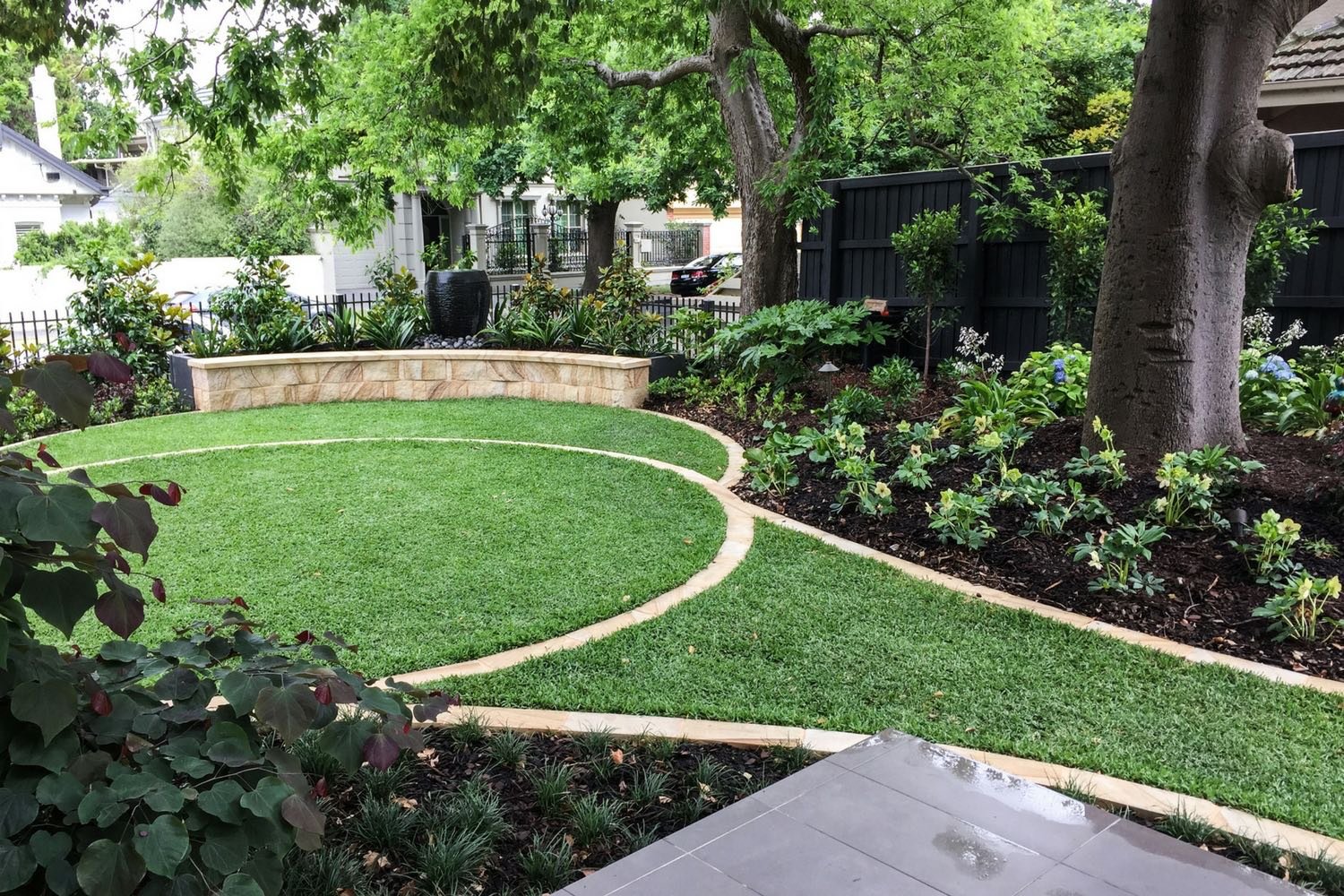
Have you been talking to different landscaping companies in Melbourne or the Mornington Peninsula about a new garden project? Have you received wildly differing quotes from them? Are you puzzled by why costs can vary so much between different landscapers?
Over the past 30 years, we've learnt a lot about landscaping quotes, costs and estimates. With over 500 gardens under our belt that's a lot of experience we can share with you. One of the main things we've learnt is that a key reason estimates between landscapers can vary so much is because there are many different types of businesses that call themselves 'landscapers'. However, the work they actually do can vary wildly from one to another.
This can make the process of comparing quotes from one to another an incredibly confusing process if you don't understand what lies behind the prices.
We hope this article will bring some clarity to the confusion surrounding this whole area and help ensure you are actually comparing apples to apples.
How different landscapers compare
Have you received quotes or estimates from different landscaping companies?
If you have, you might find that each different landscaper not only gives you a wildly different price but that each formats their quotes differently, making it even harder for you to compare apples with apples.
Some price their jobs with a lot of inclusions, others price with a lot of exclusions. Some might quote hourly rates, some might quote project fees. Some might seem really expensive and some suspiciously cheap. But there can be reasons for the wildly varying prices that go much deeper than how they present their prices.
One of which might be, are you even comparing things that are really comparable to start with?
For example, imagine you were comparing two SUVs. Both are a similar size, have the same number of wheels, similar-sized engines and the same number of seats. But one is made by Kia and the other is made by Porsche.
As you are probably familiar with both these car brands you would tend to say straight away that's not a fair comparison. But that's because you already know the vast differences between the two brands.
But when it comes to comparing landscapers you are often comparing two (or more) things you probably didn't know are not even comparable. And that's where it can get really tricky.
Apart from the different talent, experience levels, pricing etc between landscapers in the same categories, many people don't realise there are 3 different categories of landscapers to start with.
What are the three different categories of landscapers?
While landscapers can vary enormously, they can be categorised into 3 distinct categories. (Of course, there are good, bad and great within each category but that's not the purpose of this article.)
We can define the 3 key different types of landscapers out there this way:
-
The self-employed contractor. This is the classic 'one-person' landscaper. They are someone who usually takes on smaller projects. If you contact them, they will likely turn up in their ute and discuss with you what you want done in your garden. They will suggest materials and how all the work will be done. Generally, this type of landscaper does not work from a design. They simply listen to what the customer wants, make some notes or sketches and detail in their quotation what has to be done. They may have an assistant that helps them. Essentially there is nothing in the law or regulations stopping anyone from calling themselves a landscaper whether or not they have any experience or ability. All they need is a ute, some tools, some work clothes, a name and logo and a website and they are up and running.
-
The non-registered Landscaper. In many ways, this is like a scaled-up version of the above. The key difference is that while they share many attributes of the self-employed landscaper, they run a bigger operation and can have quite a large crew working for them. This means they have the capability to take on larger projects but again they may not work from a design. (They may however build garden projects that have been designed by a landscape designer or architect.) They can be quite experienced and may even be highly skilled. But that does not mean they are registered or licensed to do what they do. And they will most definitely not offer any warranty insurance on the work they do because technically if they are building anything as part of the landscaping works, what they are doing is illegal. If all they are doing is "softscaping" - digging up garden beds, laying pavers, planting trees, laying down turf, sculpting mounds or rockeries etc, then they can do that work legally, but construction is mostly out of the question. You will usually find these kinds of landscaping businesses have evolved from being a self-employed contractor and have simply hired more people to work for them.
-
The landscaper who is a registered building practitioner. This is a landscaper who has taken their whole business to the next level. They operate at the highest levels of skill and professionalism within the industry. Usually, they will be highly experienced at working on larger scale projects and have a good reputation. They will have been assessed by the Building & Plumbing Commission (who have now taken over the Victorian Building Authority) to be licensed as a Registered Building Practitioner which means any construction work they undertake must be in line with all the relevant building codes. There are severe penalties for them if they don't. They must offer warranties on all their work. They must be insured for the work they do. The way they charge their clients is regulated. Generally, these types of landscapers will also be members of professional associations such as Landscaping Victoria and/or the Landscaping Design Institute. These bodies exist to uphold industry standards and offer complaint resolution mechanisms to clients if problems arise with their projects.
The Self-employed Landscaper
This is someone who perhaps has completed an apprenticeship in landscaping with a big landscaping company and then decided to go out on their own and start their own business.
Typically they will work from home with all their tools carried in the back of the ute or stored in their garage. Often they will contract out to bigger firms to carry out any works that are beyond their experience or capability or are a speciality that is beyond their skill. They may employ 1 or 2 people to assist them.
This type of landscaper can be perfect for you if you have a smaller, landscaping project that might involve just one or two things. Like laying a new bluestone paver path to your front door, creating a new BBQ area in your back garden or creating some small garden features. For this type of work, they might work for you at an hourly rate or give you a quote.
Many of these landscapers are very good at what they do. They can be very skilled and experienced and can have a good sense of basic garden design.
However, there are limits on what they can do, both practically and legally. For example, they are not supposed to carry out any landscaping work that involves budgets over $10,000. If any project they are working on includes any works classified as Domestic Building Work, such as a deck, pergola, gazebo, etc, they are legally NOT allowed to carry out this work and must hand it over to a Registered Building Practitioner.
(To find out more about the laws in regards to who is allowed to build Domestic Building Works please see this article What type of landscaper will I need for my new garden project?
Now while this is the law, in practice there is little evidence that these laws are enforced in any way. Worryingly every week, there are landscapers all over Victoria doing all manner of work without being licenced to do so. (The same is true of plumbers and other tradesman who are supposed to be registered or licensed to do various specialised work but often are not.)
Sadly there are still many landscapers who will gladly do work on your garden with no licence at all. They will most likely therefore be much cheaper than a registered landscaper but of course, you carry both the risk if they are doing the work illegally and the consequences of it all.
Unregistered self-employed landscapers are also the cheapest option to engage as they do not carry the overhead costs associated with other categories of landscaper. While they are best suited to smaller projects you engage with them at your peril when it comes to larger, more complex garden projects.
The Non-Registered Landscaper
The non-registered landscaper is a step up from the self-employed landscaper, who tends to be either an individual or someone who employs others.
Non-registered landscapers can sometimes be quite large businesses. They might have a crew of several people, a few vehicles and even operate from a business location. They might have started as a 'one-man' band and then grew from there.
They might still do the same type of smaller projects but having a few vehicles and a crew of say 3-8 people, they might be able to work on projects for 3 or 4 clients simultaneously. They might well have built their business up by creating a reputation for good quality, smaller landscaping jobs.
Again these types of landscapers can be very experienced and able to do very good work on these 'run of the mill' type landscaping jobs.
However, when landscaping businesses get bigger they are under pressure to take on larger projects as they have to find enough work to keep their crews busy and the smaller jobs just won't cut it any more. This is where they start taking on illegal jobs simply because they have to.
They might start with knocking up a simple pergola or gazebo, then graduate to building a small deck without railings, then a larger deck, etc. Or they start out with a paved outdoor BBQ area and next thing they are knocking up a $50,000 project.
Some of these business can seem big and professional and make you feel confident. But again if they are not a Registered Building Practitioner none of their built work carries any warranty and is in fact illegal.
Now again, if they stick solely to 'softscaping' they can be very competent at what they do and can do a very fine job.
If you engage this type of landscaper, you will get a cheaper quote than a Registered Building Practitioner landscaper. They might do a very fine job, however, recognise that none of their built work will be warrantied and you carry the risk of their work, not them.
The Registered Building Practitioner
When it comes to major landscaping works, a landscaper who is a Registered Building Practitioner is the only landscaper you should employ.
Why? For the same reason that builders, plumbers and electricians have had to become registered over the years. Each of these industries for many years in the distant past had 'cowboys' working in them who carried out work that was not within the relevant codes and to be blunt, they ripped people off.
Landscaping has become registered for the very same reasons. To ensure adherence to building codes and legislation and to protect people from getting ripped off.
A landscaper who is a Registered Building Practitioner is vetted for their skill and their ability to build decks, pergolas, retaining walls, gazebos, verandahs etc, which they must construct according to the relevant building codes. If they don't there are severe penalties so this protects you when you choose them.
They are also assessed on whether they have sufficient assets to properly run their businesses. Self-employed, non-registered landscapers are not subject to any of this scrutiny.
Registered Building Practitioners are also strictly regulated on how much of a deposit they can ask before commencing work. They cannot ask for more than a 5% deposit or 10% when the project is below $16,000 in total costs. (We have previously heard of clients being charged deposits of up to 70% by unscrupulous landscapers. Luckily the work was completed but this is not uncommon amongst unregistered landscapers.)
Also, we cannot ask for payment for materials until they have actually been delivered to the site and we cannot request payment for works until they are completed, so enjoy further safeguards with a registered landscaper.
Of course, what all this protection means for you is that you will pay more for work carried out by a registered landscaper versus one who is not registered. We at Whyte Gardens incur many additional costs compared to non-registered landscapers but those costs are incurred to help ensure you get a fully professional result. And if you don't there are mechanisms in place to help you seek redress as well.
Finally, it's important to recognise that even between registered landscapers quotes and costs can vary. A business that employs 5 people will have different costs to one who employs 25.
Also, it's important to recognise that the complexity of the work the landscaper will be carrying out will also dramatically affect the final price.
Here are the four basic types of landscaping projects that you can generally undertake.
The four key types of landscaping projects
It might seem like every landscaping project is different and while that's true on one level, we've found that you can essentially classify projects into 4 basic types. (We've learnt over the past 30 years how to do this quickly when assessing a job.)
Here they are:
-
Single-element projects - This is the type of project where all you want is one thing done. It might be building a new deck. Or perhaps laying a new concrete drive. It could be creating some new garden beds and planting them out. It could be installing a water feature with some garden around it or an outdoor kitchen.
-
Small multiple-element projects - Next you may have a project where you need to have a few projects done together, none of which is particularly major. For example, widening a driveway to add another car space which requires the construction of a retaining wall and a new garden bed. Or building a new deck with some new garden beds around it with a new pathway as well. Creating new garden beds with extensions of the existing irrigation system and installing some outdoor lighting.
-
Garden rejuvenation - This is where you are rejuvenating a whole section of the garden. This could be the entire front garden or the entire rear garden or perhaps a major rejuvenation of a whole section of a large garden. It could comprise installing a pool, complete with a new deck and outdoor kitchen, totally transforming the entire rear garden. Or it could be the entire front garden including a new front fence, new driveway and paths, new garden beds and planting. This could be linked to a major renovation or extension of an existing home.
-
Complete garden makeover - This is where you have to create an entire landscaped garden, often from scratch. This most commonly applies to new-build homes or knock-down rebuilds where you are effectively wiping the entire slate clean and starting again. You may be retaining perhaps one or two feature trees or major plants but essentially it's a whole new garden, front and back. This is a major project which may take months to complete.
Now each of these above types of projects can be either simple or complex, often depending on the size of the block. For example, a single-element project might involve constructing over $40,000 worth of retaining walls or creating a deck that is 140 sqm and will cost over $100,000. Or it could be a quite small single-element project. So it's important to recognise that within each of the above four categories, there are differing levels of complexity and cost, however, all projects can still essentially be classified as above.
Where is the work being done?
Just as we previously compared SUVs between a Kia and a Porsche, so we can also compare WHERE the work is being done. This can mean the garden itself can vary as much as the Kia and the Porsche do.
For example, a person living in Melton requiring a garden rejuvenation doesn't have the same budget or expectations as a person living in Toorak. So even though the project is the same - a 'garden rejuvenation' - the projects will be vastly different. The materials for each will vary greatly. The level of sophistication of the work can vary greatly. One might be installing a fibreglass pool with a paving apron surrounding it, while the other might be installing an in-ground concrete pool with pool-house that encompasses a full outdoor kitchen.
You can clearly see that the skill level of the landscaper required to manage a fibreglass pool project with paving would not be as high or as sophisticated as the landscaper required to manage the in-ground concrete pool project.
The contractor employed to install the pool will vary dramatically between an above-ground and in-ground pool, as will their costs.
More highly skilled landscapers are more expensive to employ. The OH&S systems are more complex to manage on-site, the insurance premiums for the project are higher, the tools used are more sophisticated, etc, etc.
So you can easily see how the same 'type' of project can differ considerably depending on where it is being carried out.
We hope this article has helped you see why you might find that two different landscaping companies provide you with a quote that could vary by up to 50%. Now you know why. One might be an unregistered landscaper with much lower costs than a Registered Building Practitioner.
In summary, when comparing quotes between different landscaping companies ask yourself these 4 key questions:
1. What type of landscaper are they? (Self-employed, non-registered or registered?)
2. What type of project am I asking them to quote on? (Single-element, multiple-element, garden rejuvenation or complete garden makeover)
3. What is the level and complexity of the works involved? (Small deck or big deck? Driveway with retaining wall or just a driveway?)
4. Where am I located and what are my budget and expectations for the project? (Melton vs Toorak).
Also when comparing quotes or estimates see if you can get a good feel for the type of landscaping work they typically do. Ask them what is their capacity to carry out the work within a reasonable timeframe. And ask what resources do they normally have available to draw on, ie do they have speciality contractors on standby who can help get the work done efficiently?
If after you have done all this and you still feel unsure about why there is a big discrepancy between the quotes or estimates you have received, please feel free to contact us. We would be more than happy to review any landscaping quotes you've been given to see if we can help enlighten you as to why one may differ so wildly from another. (In one case recently we could see exactly why our prospective client had been given a much cheaper quote than ours - the other landscaper architect had NOT included any labour costs on all of the elements! It was all just material costs and some labour mixed in, without any estimate on how much it would cost to install everything! We could tell straight away this was the problem.) Please feel free to call or email us.
As so often is the case, the 'devil is in the detail'!
Related articles to help you choose the right landscaping company in Melbourne...
What type of landscaper will I need for my new garden project?
How much will it cost to get my new garden landscaped?
Is Whyte Gardens the right choice to landscape your garden?
We hope this article has helped enlighten you on how the different types of landscaping businesses can present you with often wildly varying quotes. We also hope it will help lead you to the right landscaper for the size, complexity and creativity of your project.
If you have any further questions you need answering, please search other articles in our Insights section or contact us direct by phone or email. We will be happy to answer your questions. Contact us here.
Founder of Whyte Gardens
Topics:







